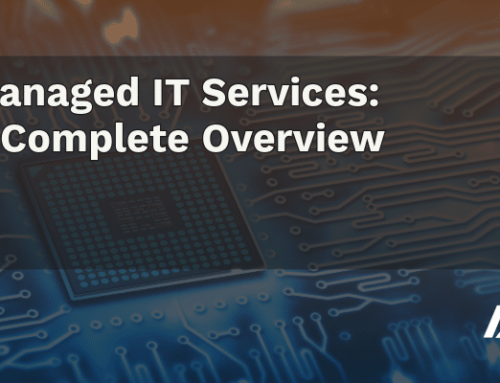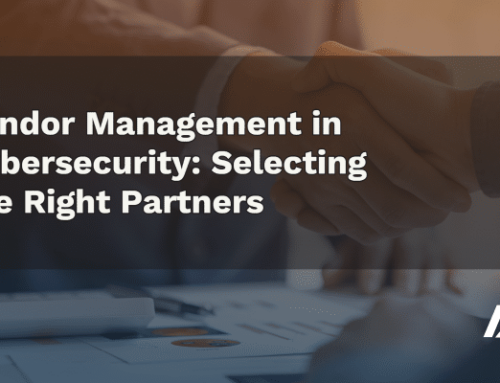Wondering how you can help keep your IT systems running smoothly, eliminate security risks, and meet ever-changing regulatory requirements at the same time? You need a data loss prevention policy.
What Is a Data Loss Prevention (DLP) Policy?
A DLP policy is a set of rules, best practices, and technologies, all of which work together to ensure unauthorized users never access your data. While commonly used to protect sensitive information against attackers, a DLP policy is meant to safeguard confidential data against any form of loss, whether it be caused by human error, ransomware or a natural disaster.
How Is Data Lost?
There are many ways your businesses data could end up at risk, but some of the most common include:
MALWARE
From ransomware to viruses and everything in between, malicious software is an increasingly common cause of lost or stolen data, and it impacts businesses of all sizes and industries.
SOFTWARE & HARDWARE ISSUES
As you upgrade software, you might lose files if the format is no longer supported. Bugs are always a potential problem, too. When it comes to your hardware, any failures can result in data loss, with older machines being particularly vulnerable.
HUMAN ERROR
Humans are bound to make mistakes. Whether it’s a configuration error, accidental deletion, or even a liquid spill, our errors often cause major data loss incidents. In fact, human error is the number one cause of data loss among businesses.
Why Your Business Needs a Data Loss Prevention Policy
ENHANCE COMPLIANCE
Regulatory organizations continue to adapt their requirements to reflect new standards of data protection, and failing to comply can cost your business not just a large piece of your revenue, but your entire reputation. A data loss prevention policy gives you the map you need to address complex regulations and fine tune your collection and reporting processes.
PROTECT YOUR BOTTOM LINE
Legal fees, service interruption, and investigation costs: These are just some of the ways data loss can impact your bottom line. The financial consequences of data loss can be so extensive that 94% of companies suffering from a catastrophic data loss do not survive.
GAIN DATA VISIBILITY
A data loss prevention policy doesn’t just protect your business. It can also help empower it. With the right tools, businesses can gain valuable insights into how their data is being used and make ongoing improvements to their processes.
Tips to Get Started
IDENTIFY YOUR SENSITIVE DATA
You can’t protect your sensitive data if you don’t know what’s sensitive and what’s not. That’s why the first step of any data loss prevention strategy includes defining which data needs to be protected, where that data is located, how it’s accessed, when the information should be archived, and any potential threats that could put the data at risk.
CONSIDER ALL TYPES OF DATA
Data comes in different forms, including data at rest, data in motion, and data in use. A robust data loss prevention policy considers these different stages and includes rules on how data should be processed, copied, and modified throughout each.
UNDERSTAND YOUR COMPLIANCE OBLIGATIONS
Depending on the industry, even small instances of data loss can have serious legal ramifications for your business. As you create your policies, be sure to keep any applicable regulations front of mind.
CREATE & IMPLEMENT ACCESS CONTROLS
To minimize the chances of data loss, data should ideally be accessed on a need-to-know basis, meaning employees should only have access to the data that is critical to their role. This way, only a limited amount of data is at risk of being lost when an account is compromised.
LEVERAGE DLP SOLUTIONS (AND KEEP THEM UP TO DATE)
From firewalls and VPNs to backup and privacy management software, there’s a vast range of data loss prevention tools that can help you safeguard your business. Once you’ve found the ones that align with your strategy, make sure they stay patched and updated so bad actors can’t exploit any vulnerabilities.
HAVE A BACKUP STRATEGY
The hope of any business putting together a data loss prevention policy is that they can prevent data loss completely, but no plan is totally foolproof. If you want to avoid potentially doing serious damage to your business, you need a plan B. With a strong backup and disaster recovery strategy, you can work with the peace of mind that your data is secure, no matter what happens.
What’s Next?
Every business needs a data loss prevention policy, but not every business has the resources to make it happen. As your IT and cybersecurity partner, we fill in the gaps and help you develop—and maintain—a DLP policy that’s fully aligned with your wider business objectives. Connect with us today to learn more about our customer-first approach.




